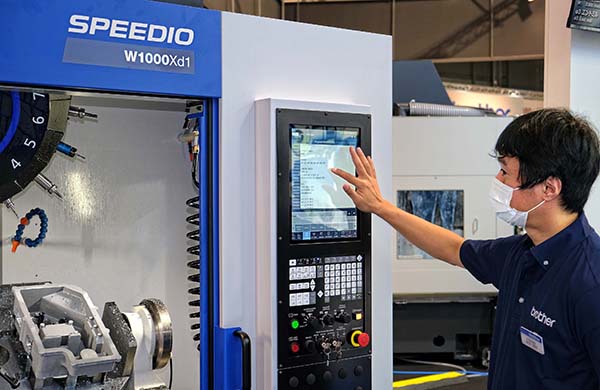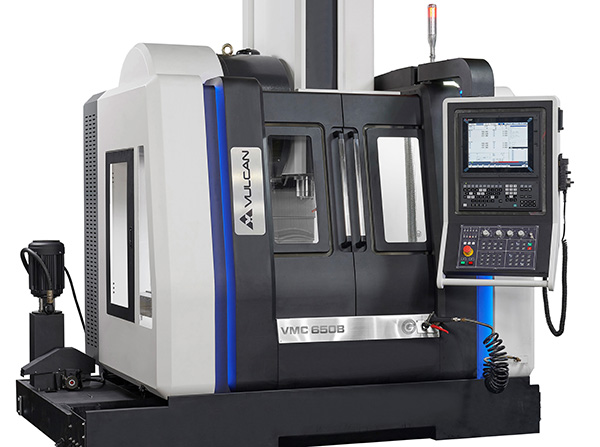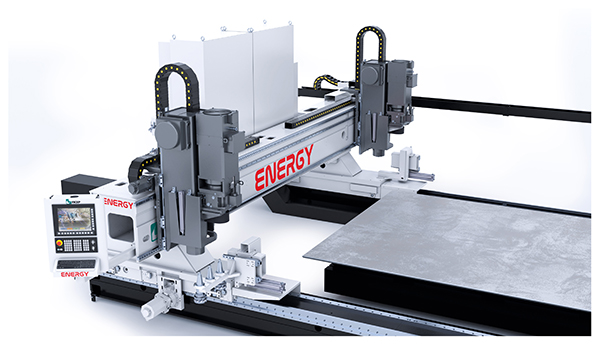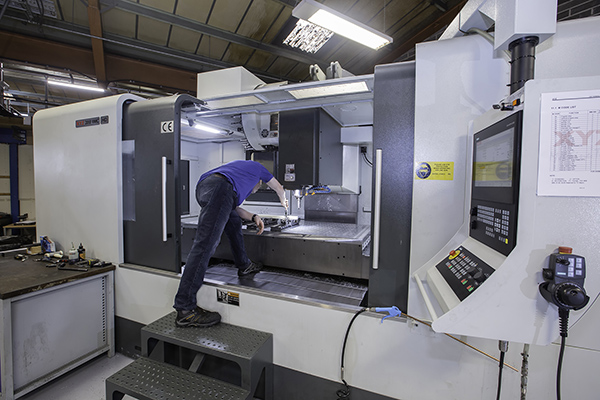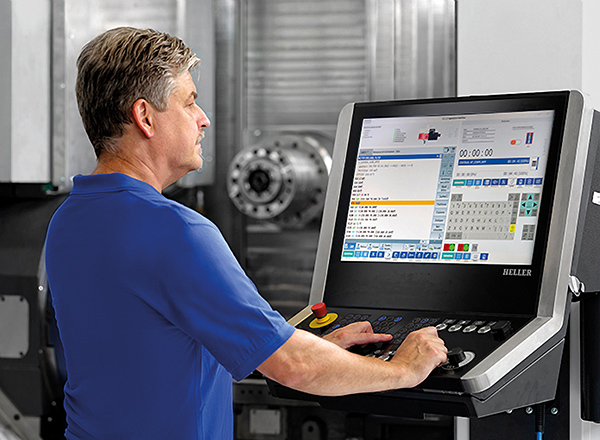
Launched in October by Brother at the EMO exhibition in Milan, the new Speedio W1000Xd1 30-taper vertical machining centre has a 1 m X axis, like the S1000X1 model that it supersedes. However, there are profound differences between the two Japanese-built machines, according to sole sales and service agent in the UK and Ireland, Whitehouse Machine Tools.
For instance, the new machine has been fitted with low-inertia motors and incorporates CAE-optimised castings to minimise the weight of the main structure and improve rigidity. Additionally, the manufacturer’s fourth-generation D00 control increases acceleration, speed and responsiveness. The compact, 3.35-tonne machine sits in a nominally 2.4 sq m space.
The W1000Xd1 is the first machine from Brother to have an LCD touchscreen control (15-inch screen). Energy-efficient hybrid drive motors are in place, and the faster acceleration and deceleration of the low-inertia spindle motor, which harnesses interior permanent magnet technology, has cut tool-to-tool time by 25% to 0.6 seconds. In turn, cut-to-cut time is reduced from 1.4 to 1.2 seconds, shortening cycles by between 3% and 9% depending on workpiece size and complexity.
Four suites of support apps built into the control – Setup Tools, Adjust Tools, Production Tools and Recovery Tools – group relevant functions according to their purpose, leading to efficient operation. Production and operation status may be visualised more easily on the screen to speed and improve understanding of each machining process. Useful information like workpiece count, remaining tool life and power consumption is displayed during every production run.
As their name implies, Speedio machines are quick. Rapid traverse in X and Y is 50 m/min and even faster in the 300 mm Z axis at 56 m/min.
For further information
www.wmtcnc.com






